Summary:
The first project you complete as part of your GCSE will be on the theme of Natural Form. It will give you the opportunity to try new media, materials, processes and techniques, while also allowing you to refine your existing skills. The project can be split into the following sections:
• Initial ideas and intentions
• A look at the work of John Ruskin
• Studies with a range of media: Photography, pencil, charcoal, biro, fine-liner, mono-printing, etching, lino-printing, colouring pencil, sepia/sanguine pencils, watercolour, acrylics, oils and Photoshop.
• Ideas development
• Research an additional artist
• Studies in the style of this artist that also explore ideas
• A series of larger out-of-sketchbook pieces
• Refinement of skills
• Final Piece
• A look at the work of John Ruskin
• Studies with a range of media: Photography, pencil, charcoal, biro, fine-liner, mono-printing, etching, lino-printing, colouring pencil, sepia/sanguine pencils, watercolour, acrylics, oils and Photoshop.
• Ideas development
• Research an additional artist
• Studies in the style of this artist that also explore ideas
• A series of larger out-of-sketchbook pieces
• Refinement of skills
• Final Piece
Exemplar Sketchbook:
Below are photos of my sketchbook for you to use to help structure your own book and inspire ideas for how you might develop the theme in your own way. It is still a work in progress, so there are many empty pages with notes on to remind me what I intend to put there.

Mind map
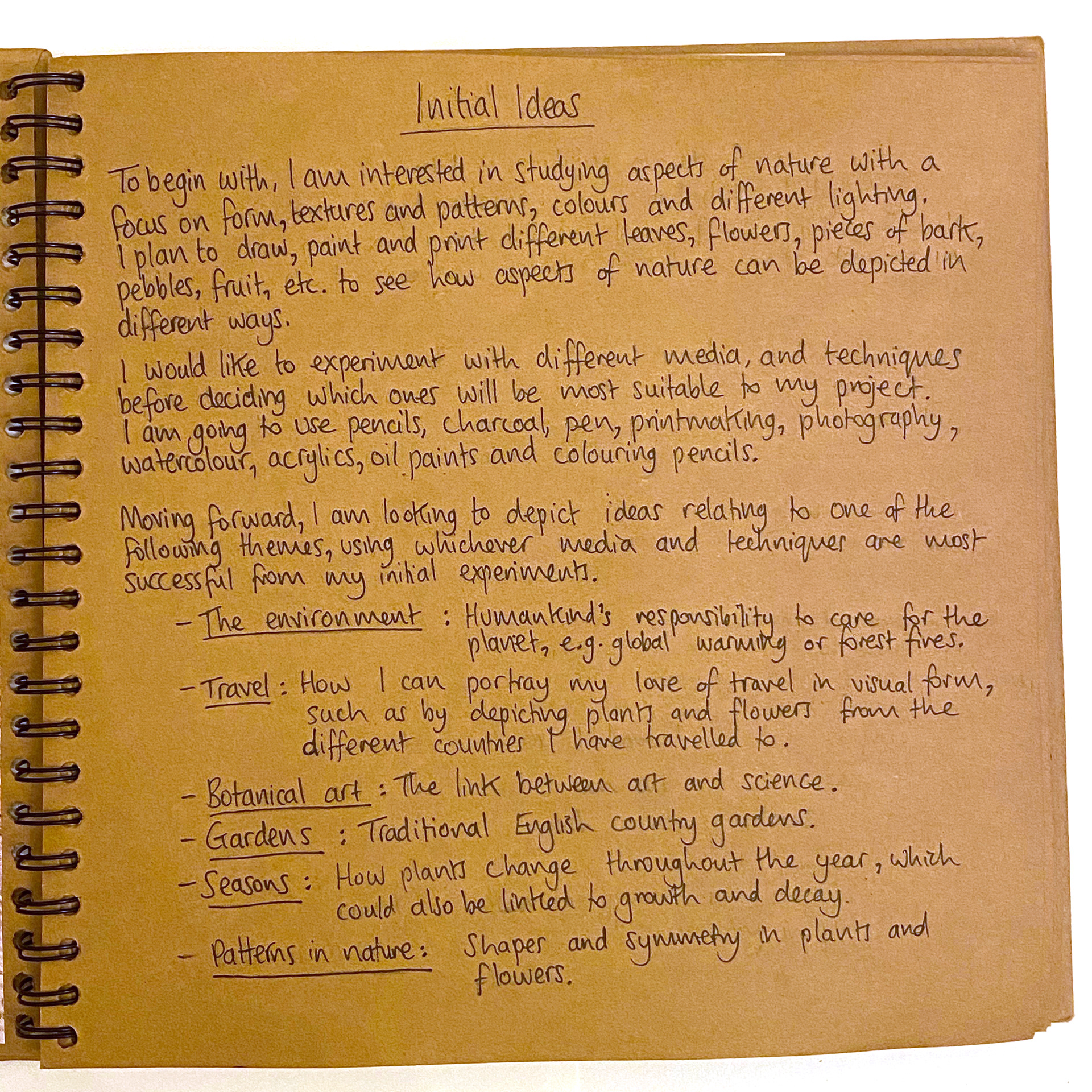
Intentions

Pencil studies of leaves
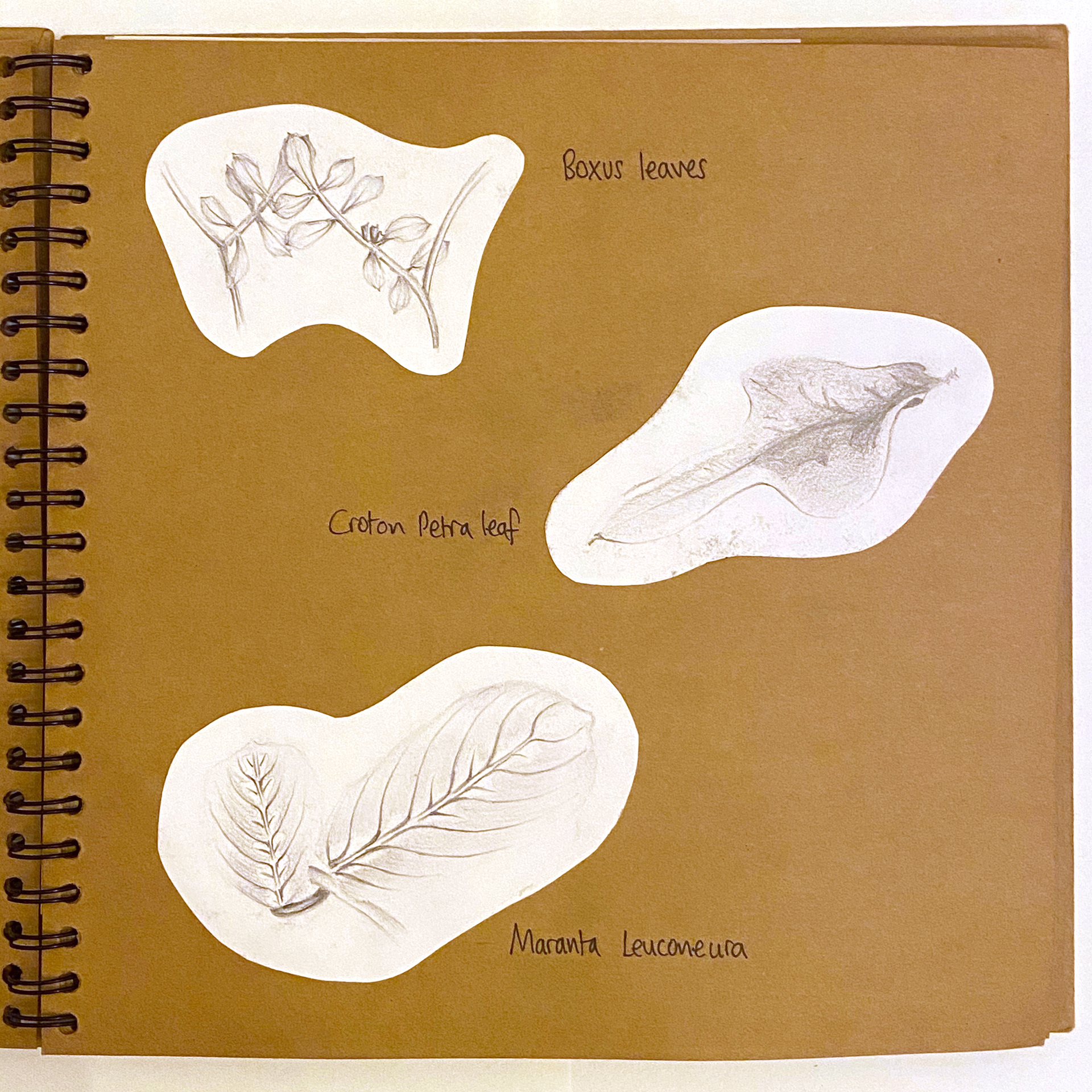
Pencil studies of leaves

B&W natural form photos

B&W natural form photos

John Ruskin research & study

Inspired by Ruskin

Pencil study inspired by Ruskin

Charcoal & carbon pencil studies

Charcoal study

Fine-liner studies

Fine-liner studies

Monoprint

Lino print (the process)

Lino prints

Colouring pencil studies

Colouring pencil study

Acrylic paint experiments

Acrylic paint experiments

Faith Te research & study

Oil paint studies in the style of Faith Te
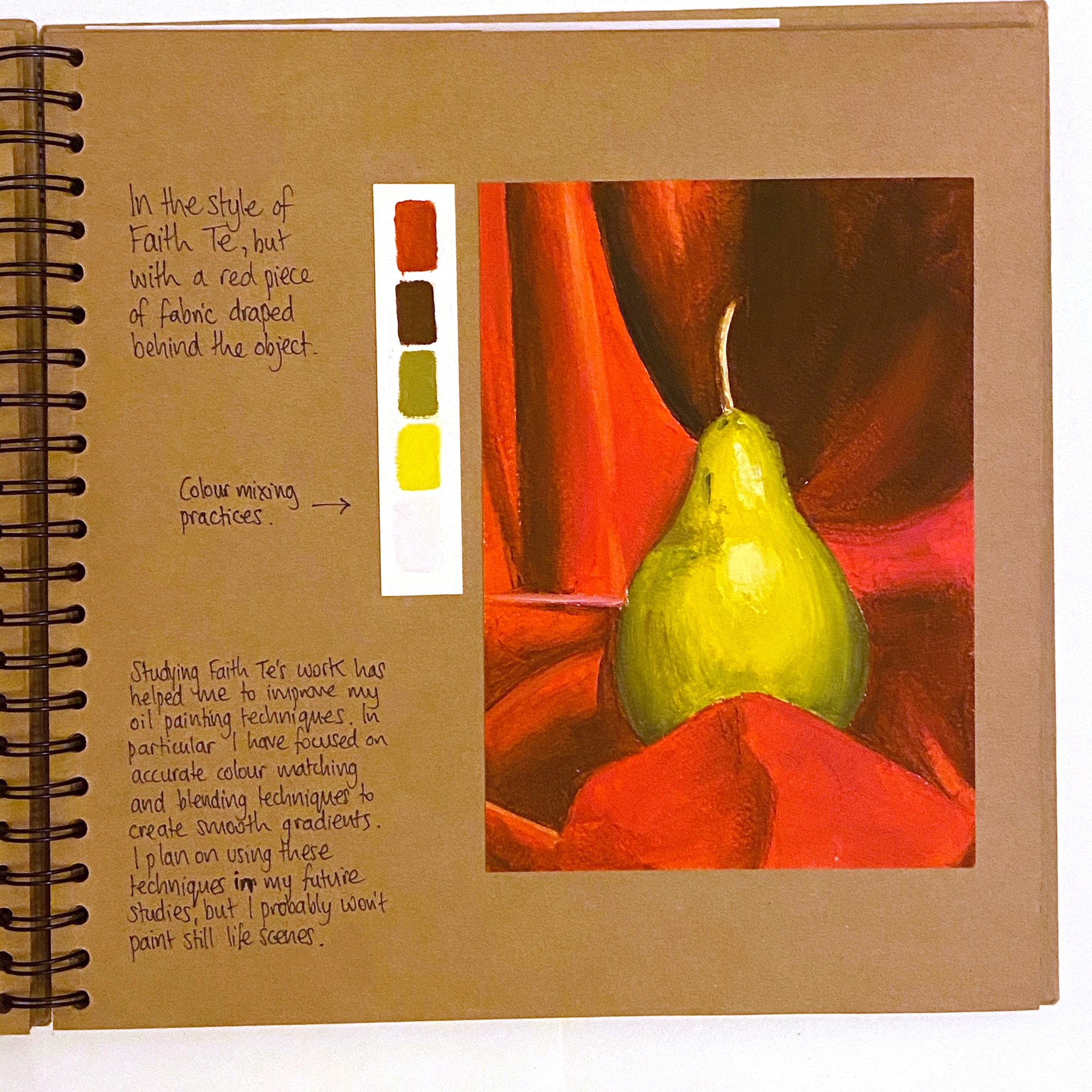
Oil paint studies in the style of Faith Te
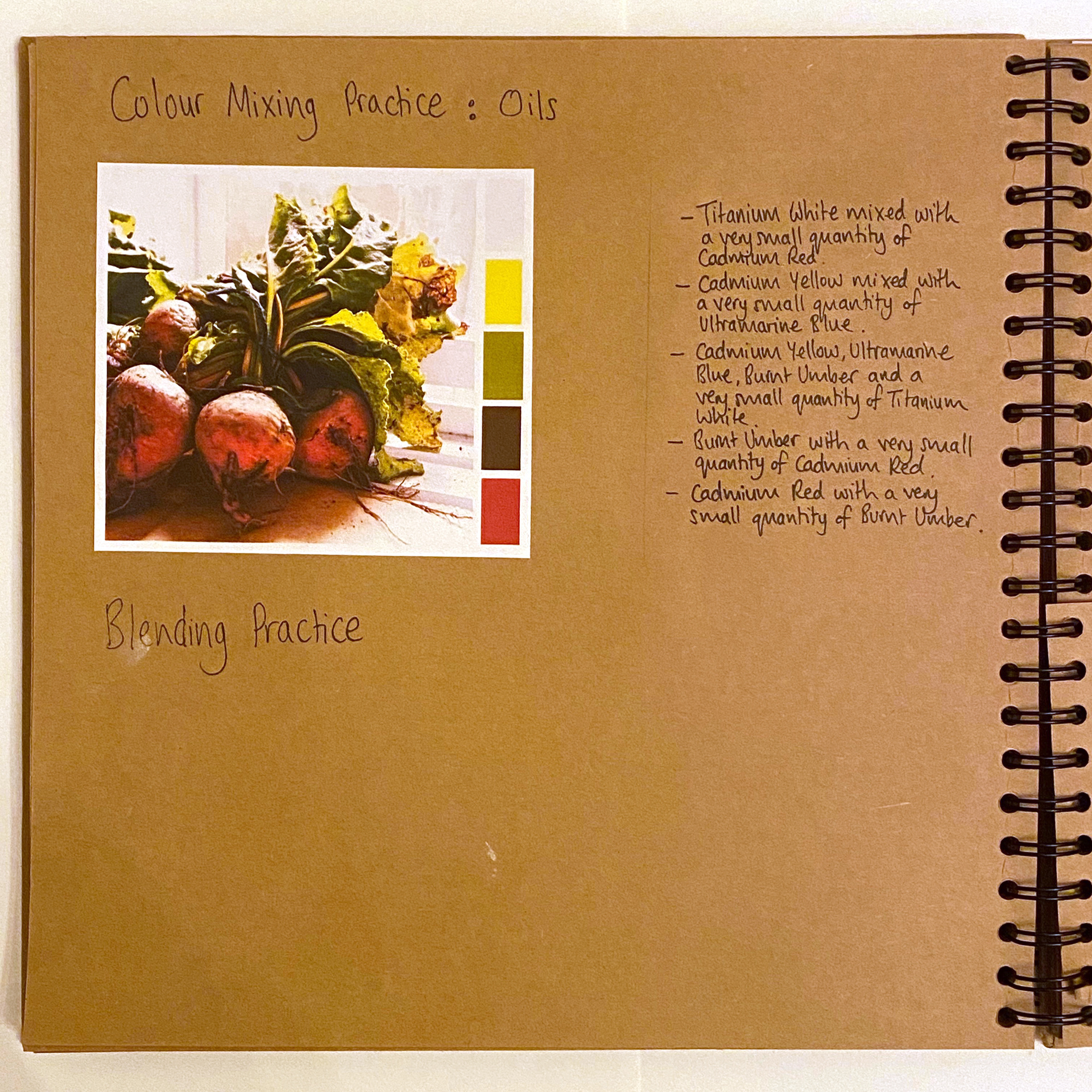
Colour studies

Oil painting

Development of ideas page

Development of ideas page

Colour photos

Colour photos

Oil painting


Photoshop compositions

Oil painting inspired by Marianne North
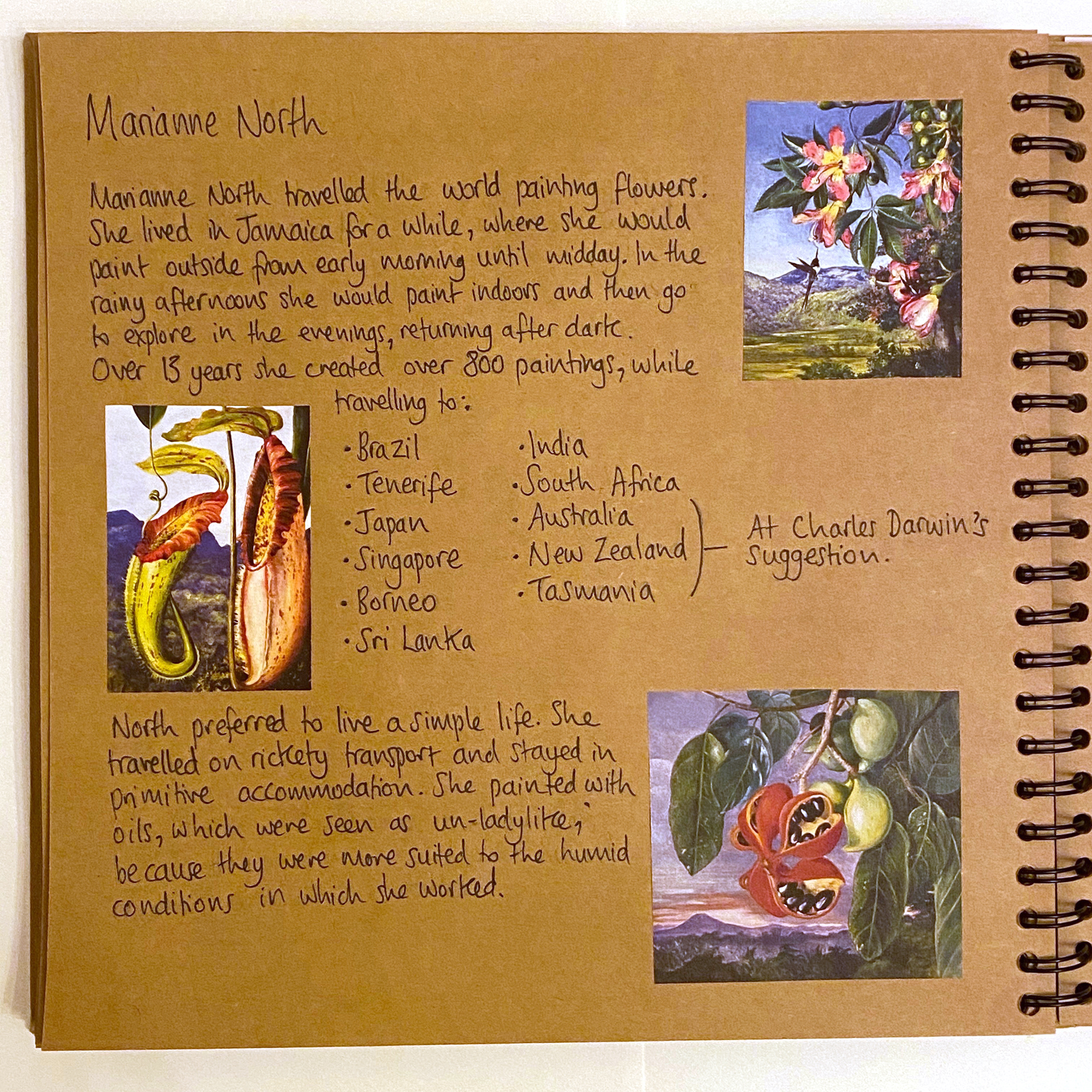
Marianne North research page

Marianne North research page

Marianne North study in acrylics

In the style of Marianne North

Pencil studies of flowers from around the world
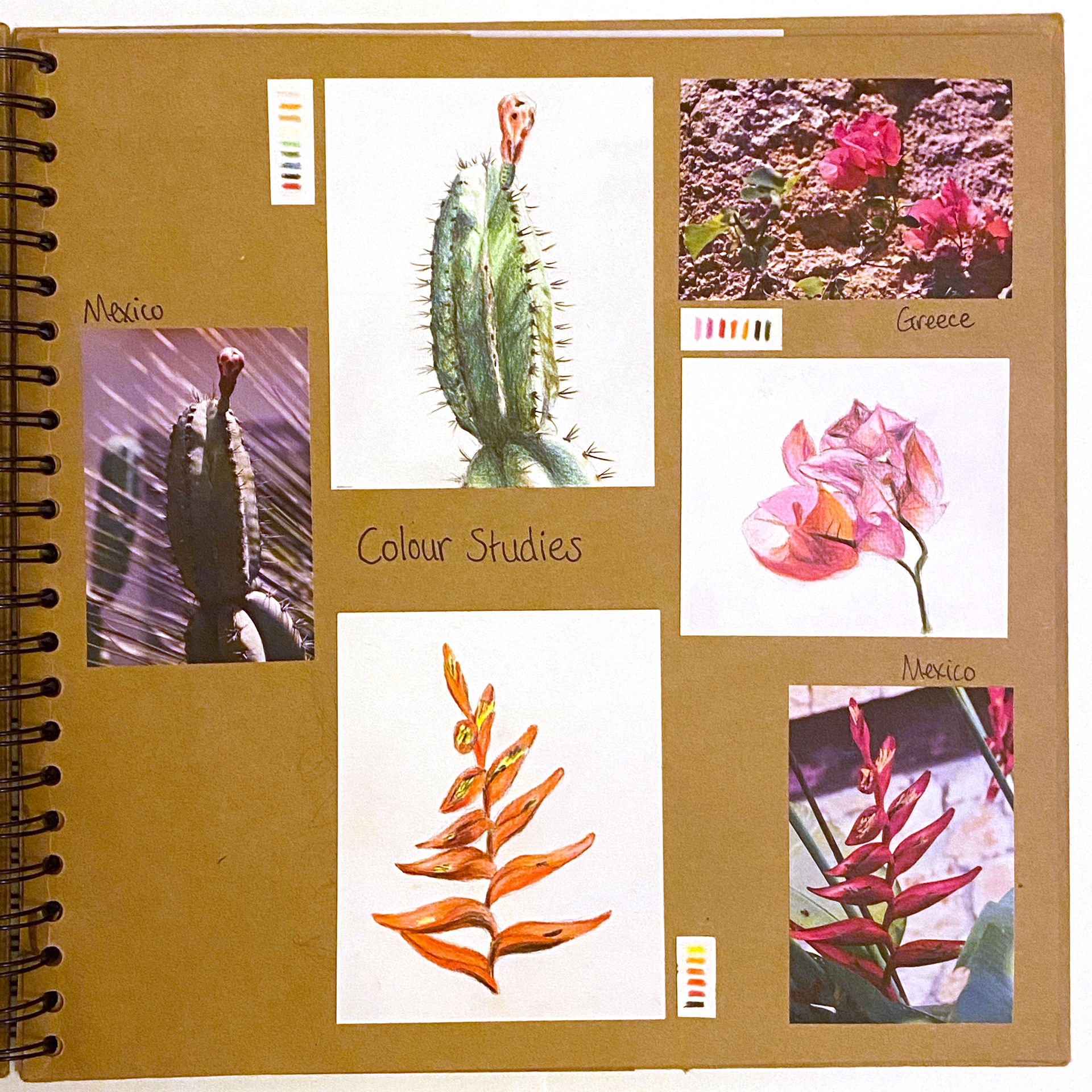
Colouring pencil studies of flowers from around the world

Exotic fruit studies

Photos of exotic fruit from around the world
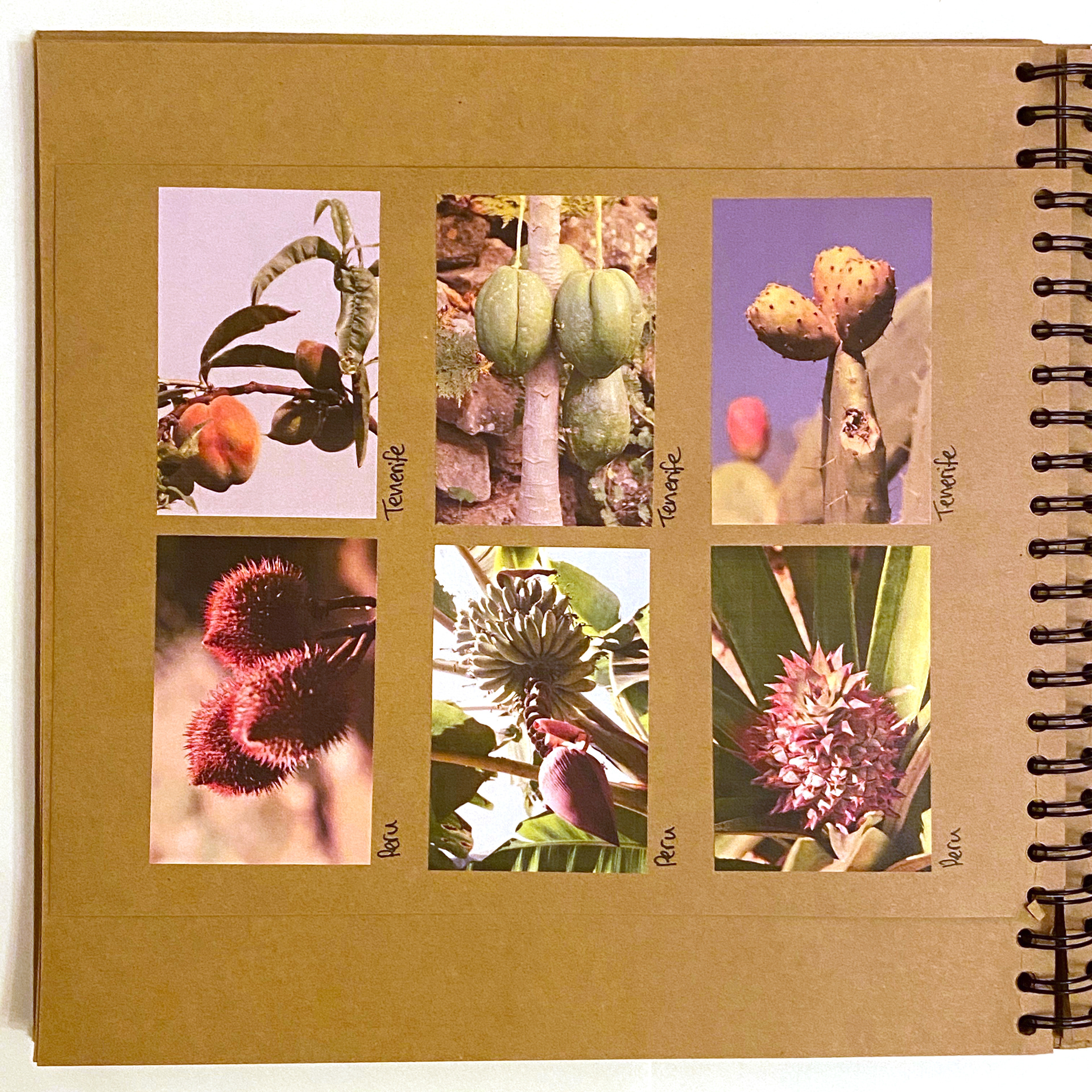
Photos of exotic fruit from around the world

Birds from around the world

Birds from around the world




William Morris research

William Morris study

William Morris research



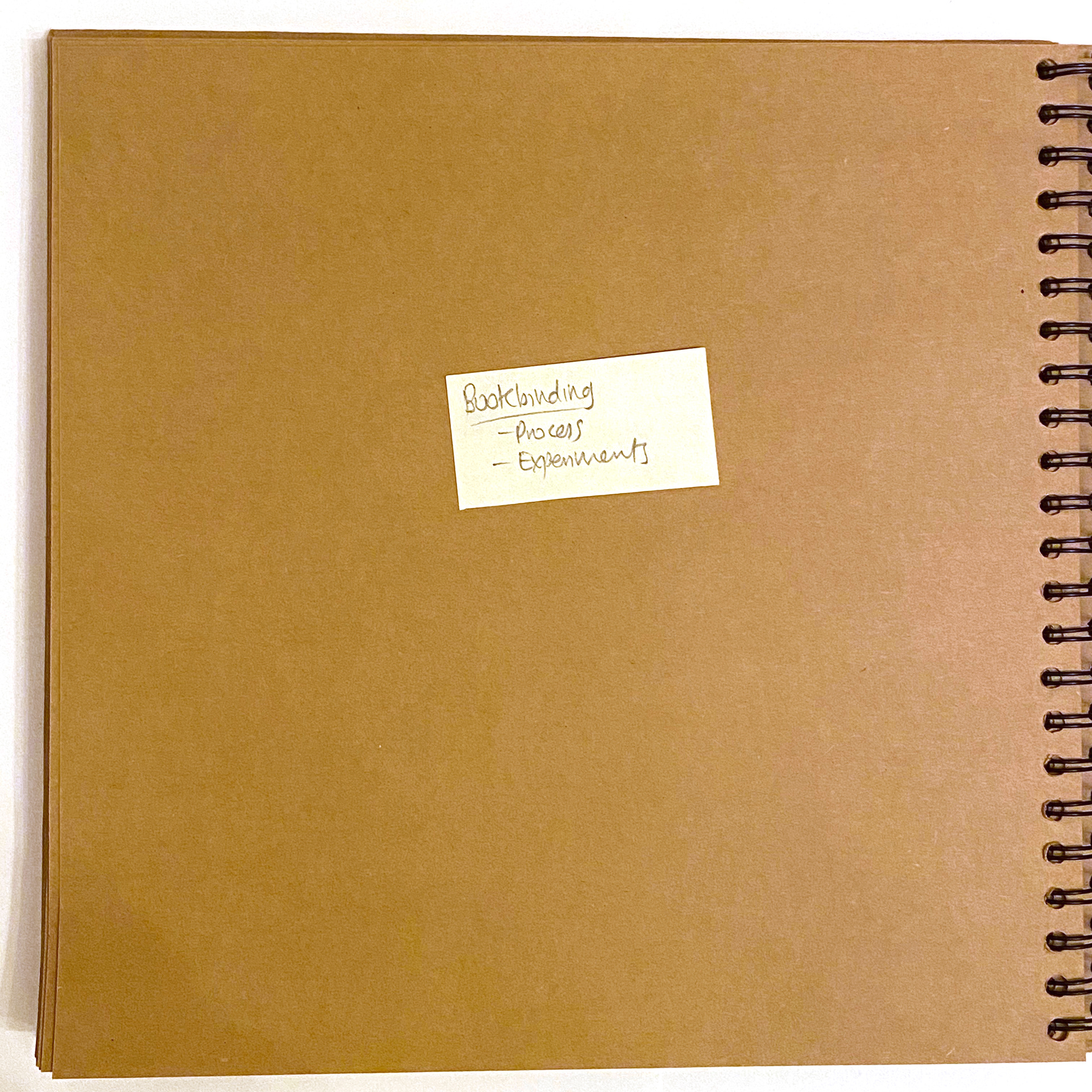
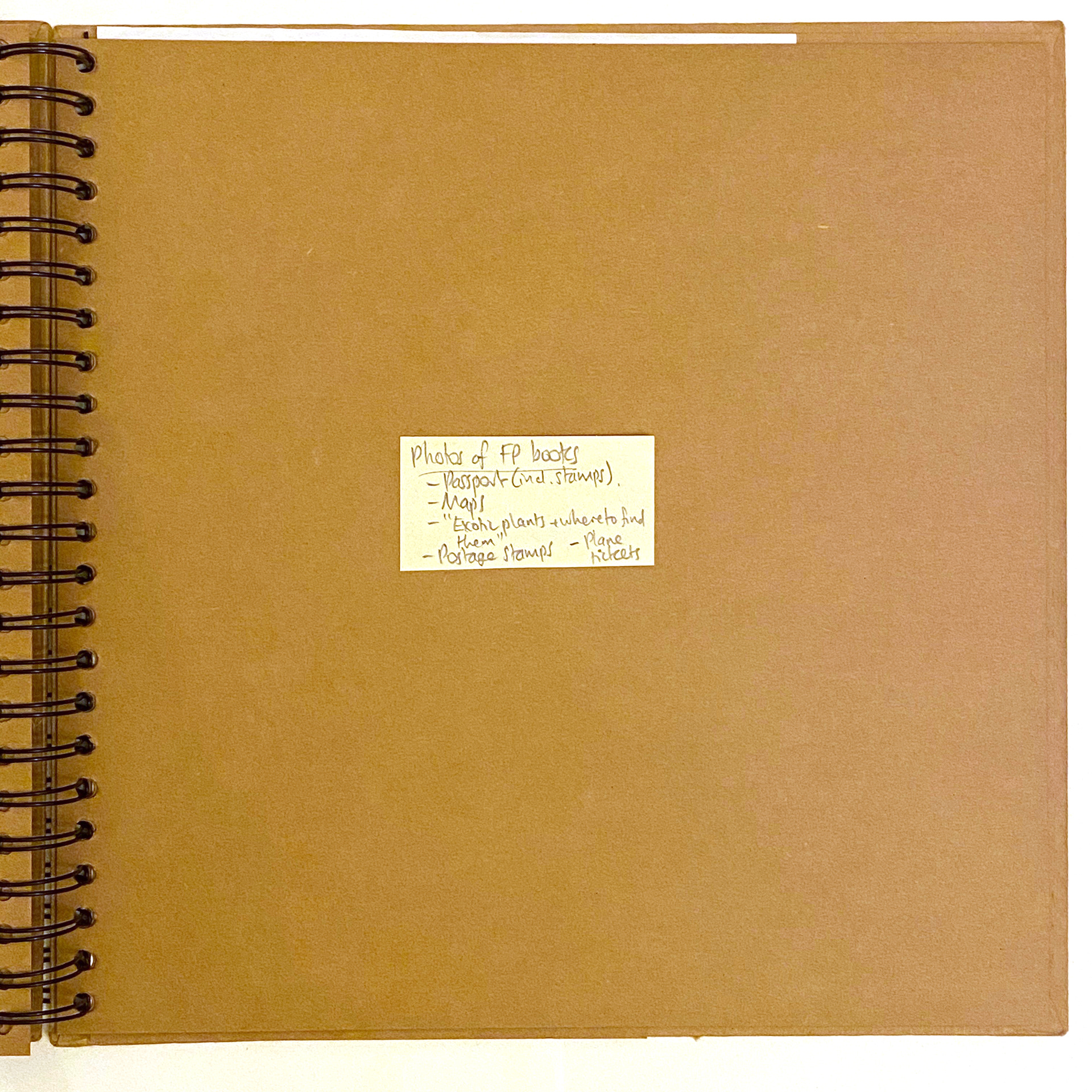




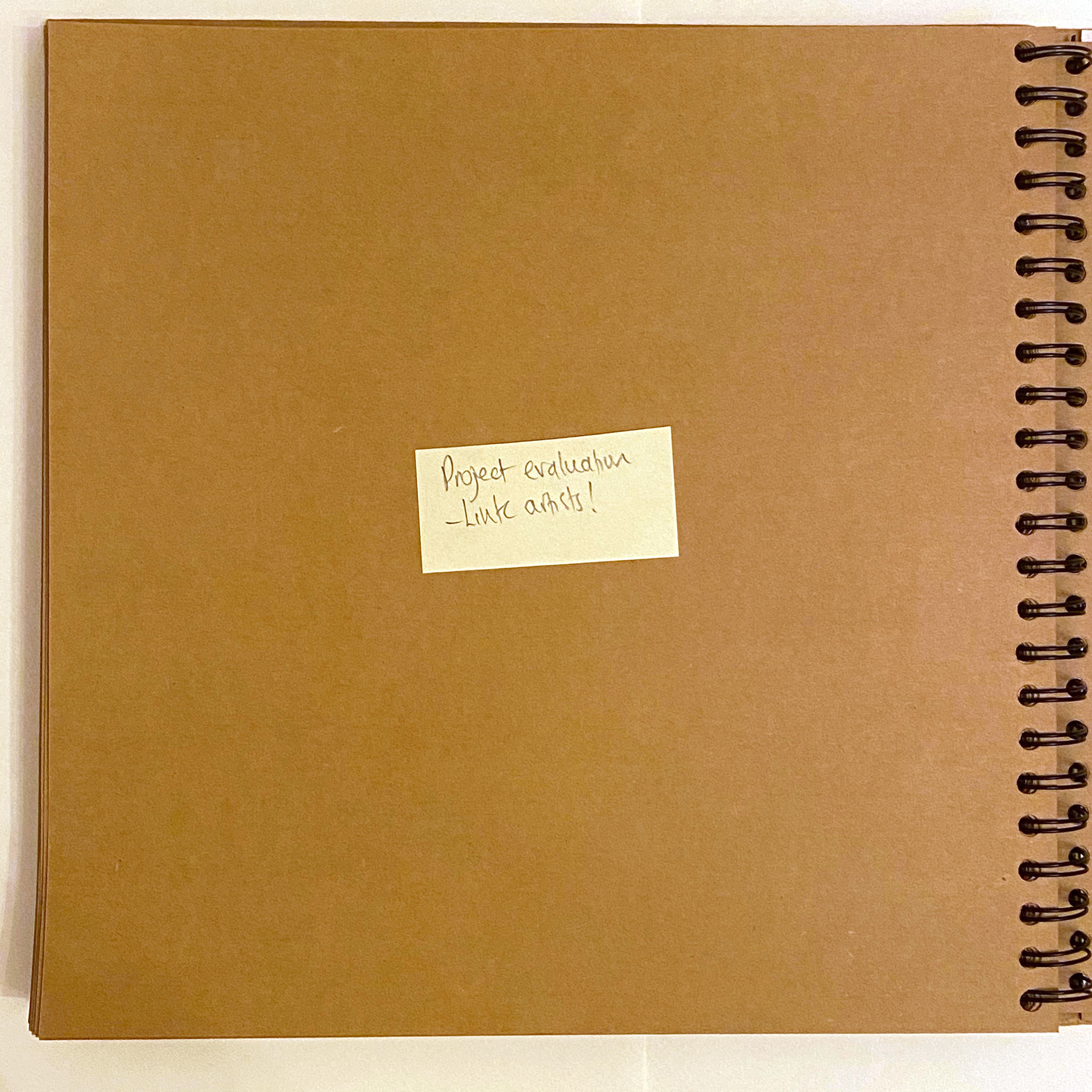
Canvas pieces (out-of-sketchbook):

Marianne North study

Oil Study

In the style of Marianne North
Final Piece:
Under construction!
Personalisation
What direction will your project take you? Although you begin with the set starting point of 'Natural Forms', it can evolve in whatever direction you like.
Checklist:
1. Title page
2. Mind-map
3. Initial ideas / intentions
4. Observational drawings of leaves in pencil
5. Black and white photographs of natural forms
6. John Ruskin research pages
7. Watercolour study of one of Ruskin's leaves
8. Black/white/sepia/sanguine study of a leaf in the style of Ruskin
9. Pencil study of a leaf with the same dramatic lighting as Ruskin
10. Charcoal studies
11. Fine-liner studies
12. Monoprints
13. Linoprints
14. Etchings
15. Colouring pencil studies
16. Acrylic studies
17. Oil studies
18. Development of ideas pages
19. Photographs to support ideas
20. Photoshop compositions to support new ideas
21. Research new artist relevant to ideas
22. Studies in the style of new artist
23. Larger, more refined pieces that evidence ideas while also clearly informed by new artist
24. Studies to further develop ideas in greater depth
25. Additional photographs
26. Studies to develop ideas even further
27. Research another artist relevant to extended ideas development
28. Refinement of skills and ideas
29. Larger, more refined pieces that evidence ideas while also clearly informed by new artist
30. Final piece planning
31. Final Piece
32. Evaluation
2. Mind-map
3. Initial ideas / intentions
4. Observational drawings of leaves in pencil
5. Black and white photographs of natural forms
6. John Ruskin research pages
7. Watercolour study of one of Ruskin's leaves
8. Black/white/sepia/sanguine study of a leaf in the style of Ruskin
9. Pencil study of a leaf with the same dramatic lighting as Ruskin
10. Charcoal studies
11. Fine-liner studies
12. Monoprints
13. Linoprints
14. Etchings
15. Colouring pencil studies
16. Acrylic studies
17. Oil studies
18. Development of ideas pages
19. Photographs to support ideas
20. Photoshop compositions to support new ideas
21. Research new artist relevant to ideas
22. Studies in the style of new artist
23. Larger, more refined pieces that evidence ideas while also clearly informed by new artist
24. Studies to further develop ideas in greater depth
25. Additional photographs
26. Studies to develop ideas even further
27. Research another artist relevant to extended ideas development
28. Refinement of skills and ideas
29. Larger, more refined pieces that evidence ideas while also clearly informed by new artist
30. Final piece planning
31. Final Piece
32. Evaluation